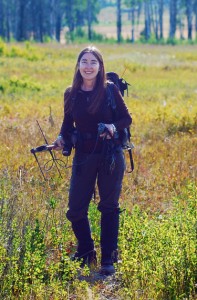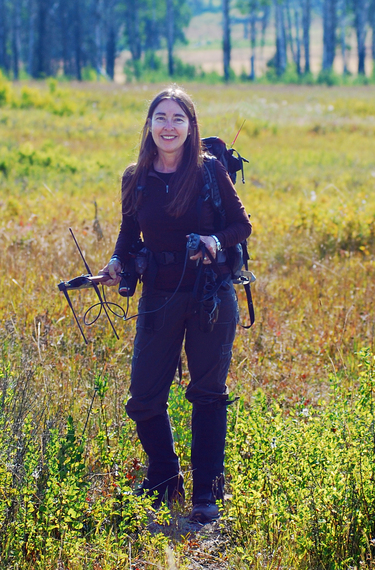
Twenty years ago, I was a stay-at-home Montana mom living in a place where the large carnivore population (wolves, bears, cougars) outnumbered the human population. Parenting our daughters here required learning new life skills–such as wildlife tracking. Before I could send our kids out to play, I’d go tracking in our yard and woods to see who’d been around. If I found fresh grizzly bear or cougar tracks, I planned an indoor activity instead. This strategy worked well.
Beyond keeping my family safe, tracking had many personal benefits. It sharpened my senses, gave me a keen awareness of the wildlife community, and made me feel part of the natural world, rather than a detatched observer. And when I eventually returned to college to become a scientist, my tracking skills provided the foundation for my wildlife research.
The past 40 years have brought great technological advances in how we survey animal movements. In the 1970s, scientists pioneered the use of Very High Frequency (VHF) collars that send out radio signals to indicate animal locations–called telemetry. In the mid-1990s, this technology leapt forward with Global Positioning System (GPS) collars that collect animal location data via satellite signals with up to one-meter accuracy.
Source: Quantifying Wildness; Tracking Wolves and Elk in the Rockies | Cristina Eisenberg
